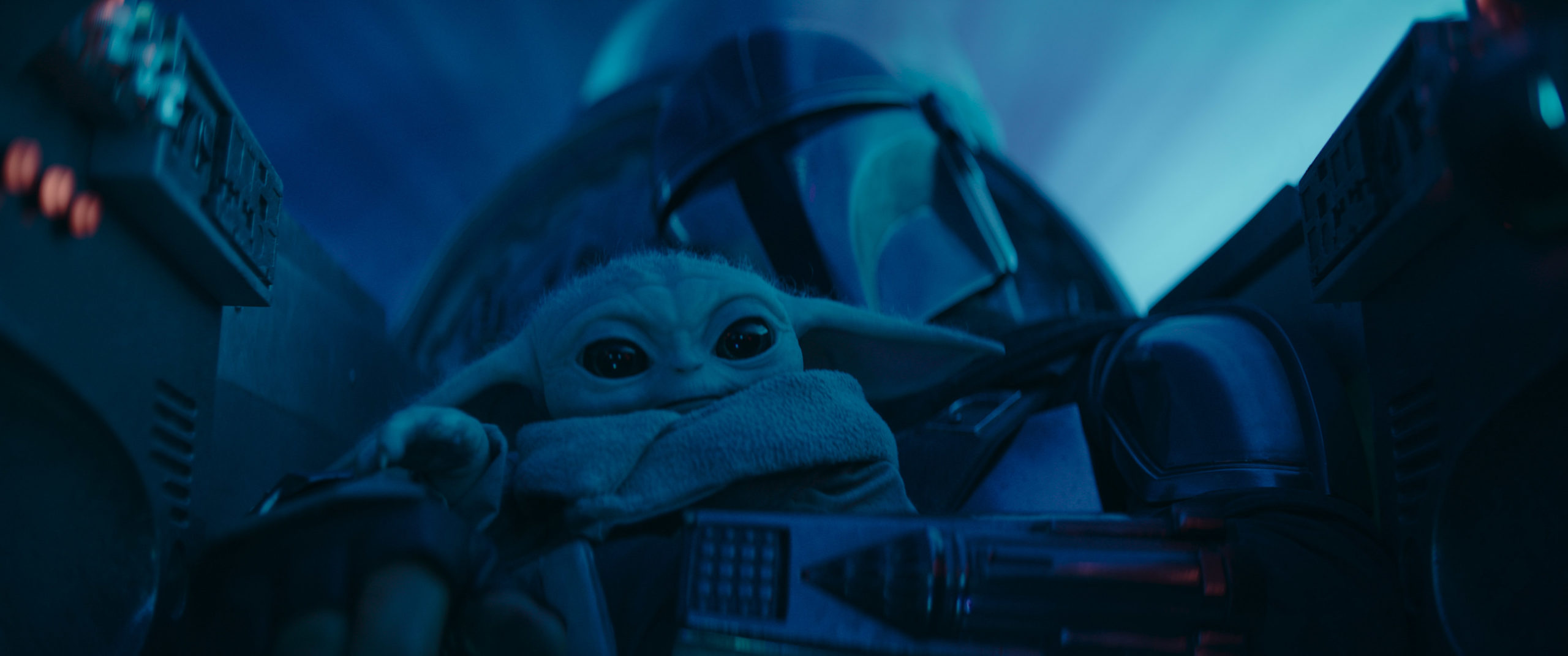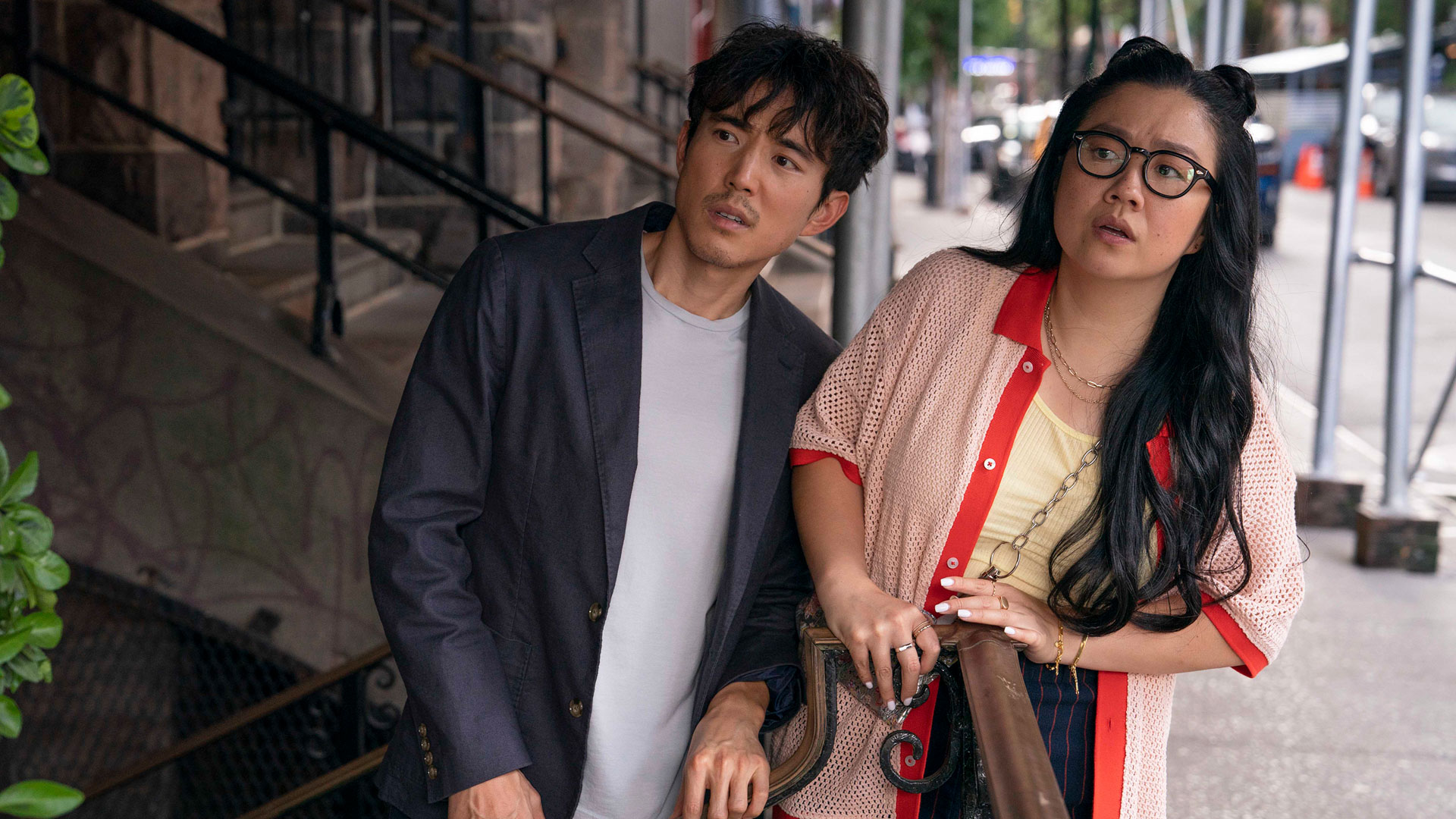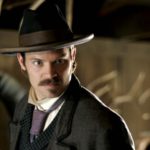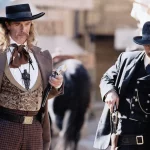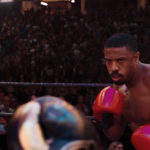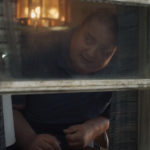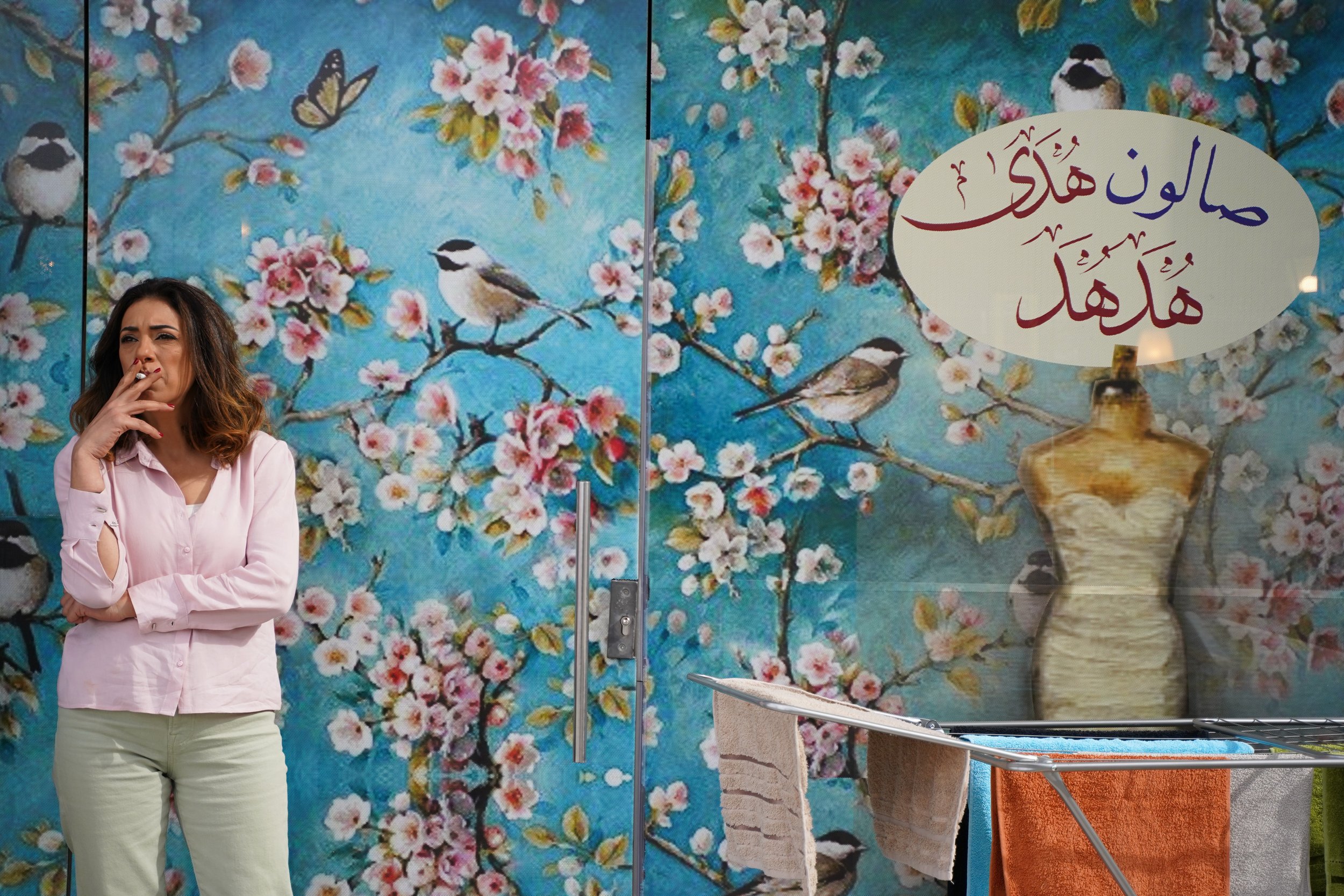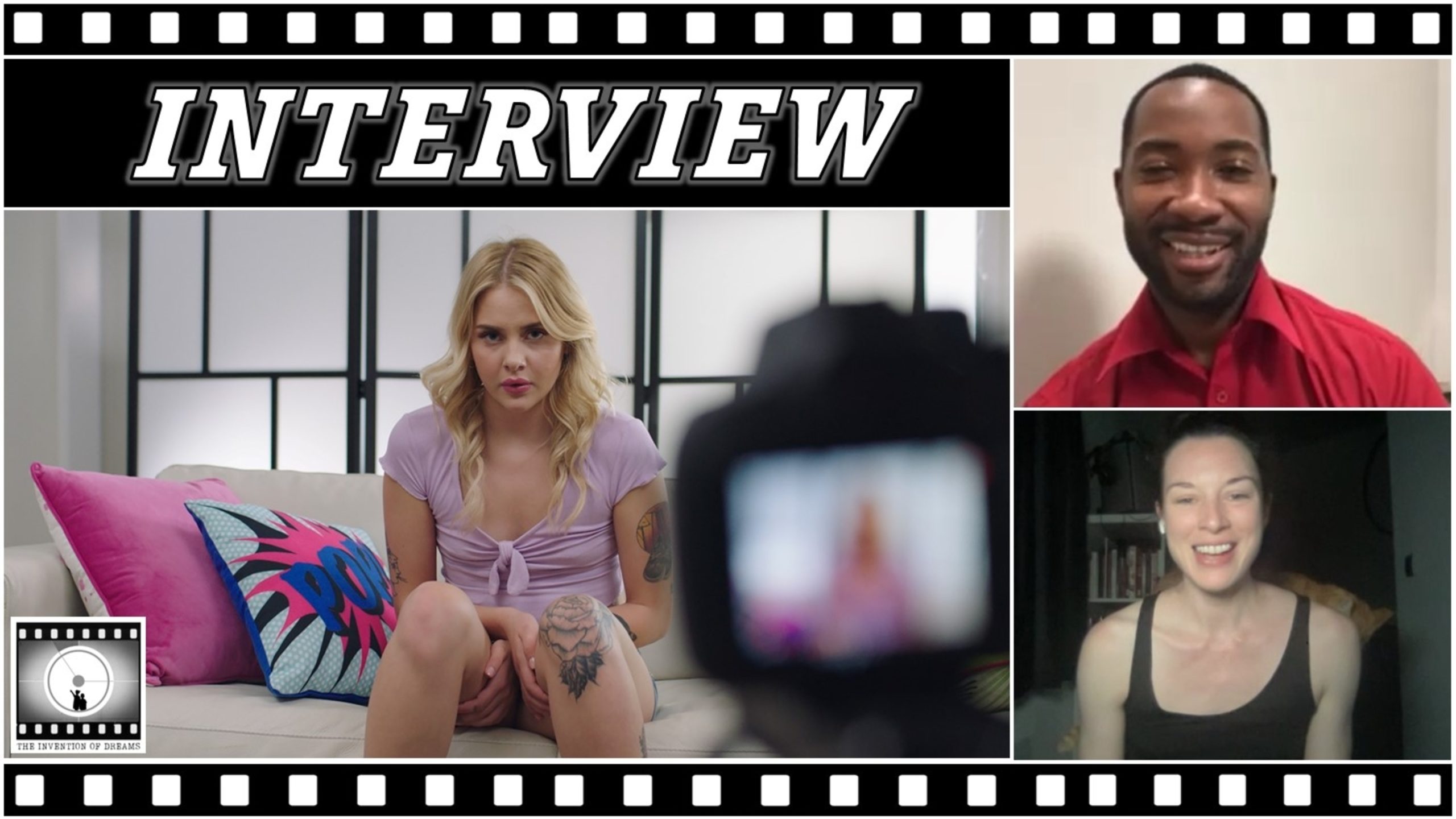I had the chance to speak with director B.J. McDonnell about his new film Studio 666, a horror comedy starring the Foo Fighters. McDonnell has a long Hollywood career working primarily as a camera operator on everything from big MCU films like Avengers: Age of Ultron and blockbusters like Top Gun: Maverick to microbudget horror, television (American Horror Story), comedy (MacGruber) and everything in between. He’s directed a number of Slayer music videos. Studio 666 is his second film as a director.
Studio 666 is an intentionally over-the-top horror comedy that leans into the long history of both band movies and 80s gorefest horror. The Foo Fighters are perhaps the perfect band to try to bring this mixture to life. I really enjoyed speaking with B.J. It’s clear he’s passionate about genre film work and purposefully strove for a very fun over the top tone with Studio 666.
Video:
Transcript:
The following has been lightly edited for clarity and conciseness.

The History of Band Movies and Studio 666
I loved this movie! I had a great time with it. I wanted to dive right in. There’s such a long history of rock and rock-adjacent movies dating back to the 50s with Elvis and Jailhouse Rock up through A Hard Day’s Night and Tommy. I’m curious how that history of the genre informed what you were going for here.
McDonnell: Obviously, it’s the Foo Fighters! When Dave said he wanted to make a horror film, instantly I thought you guys want a horror film and it’s been a really long time since we saw a band related film. A lot of the focus was on mixing this band film, but we’re also going to make it a horror film and we’re also going to mix it with a comedy. It was very hard to do! I think the people that get what we were trying to do are going to love the movie. It really is what we were trying to go for: 80s gore, a band doing their thing in a movie in a bad situation, and the comedy of the Foo Fighters, like in the old music videos they used to make. We wanted to mix that all together, that’s what we wanted to go for.
What do you think is happening to the genre? It’s such a joyful experience and with this film it seems like people are responding really positively. I can’t think of many – maybe Tenacious D the last twenty years or so.
McDonnell: I think the people that really want to see these things are the people who are really nostalgic for them. I think those people are going to love it. I loved those movies growing up, I thought they were so rad. They were so fun. You don’t get that sort of fun in the movies. We get the same things over and over – it’s not bad, I love all the horror films that come back, all the comedies – but when’s the last time we saw an actual band movie? Especially one that’s full on horror and gore like that? We’re really happy to put our own touch on that with the feel of the old school.

B.J. McDonnell’s Background in Horror
I want to talk about the horror influences as well. There are some obvious nods here – The Shining, Evil Dead, and John Carpenter – but I know you have worked throughout the genre from the Hatchet series to Walking Dead webisodes to Malignant. All across the board! I’m curious what some of the deeper cut influences and nods you put into the movie. I’m sure you have just an immense knowledge of the genre.
McDonnell: I grew up as that kid that would watch HBO when the movies were on late at night. My parents were like “oh we’re going to go see our friends, here’s the TV!” ::Laughter:: Awesome, I’m going to throw on HBO. As a kid my age, I probably never should’ve watched half the things I watched. I think it did mold the kind of things I love watching. John Carpenter stuff, Wes Craven, Sam Raimi, Tobe Hooper. Those kind of movies shaped my world of films I liked and wanted to actually make. I took that knowledge. When I came out to Los Angeles, I became a camera operator on my journey to being a director. It took me on a whole different path for awhile, and I know I’m back where I was trying to be. I’ve worked with some of the best guys, you mentioned Malignant and James Wan is amazing. And Gary Dauberman is awesome, Rob Zombie, David Sandberg on Annabelle: Creation, they’re fantastic people and I’ve learned so much from them and the things they do. The movies that I grew up loving and the new school people that I’ve worked with – it’s a great mixture to be involved with all and also growing up with it.
How McDonnell’s History as a Camera Operator Informed His Filmmaking
I wanted to ask how that background informs your work here. On the camera operator side you’ve worked across the board from the Top Guns and the MCU to very microbudget sort of projects. This movie has a great look and feel. It looks like it cost a lot more than what I imagine the actual budget was…
McDonnell: Correct! ::Laughter::
I’m curious how all that background informed your filmmaking process and your style bringing this together.
McDonnell: I wanted to make sure that movie, for as fun as it was, looked as big as we could possibly make it look with what we had. As a camera operator, that goes for me with working with certain cinematographers that I really like. Michael Dellatorre is a buddy of mine. He did Brightburn and I loved what he did with that. My friend Eric Leach came in and shot the other half. We shot before COVID and then shot the other half after COVID. So I had two DPs but they were great and meshed everything together so well. As a camera operator, my whole take on the look of the film is that I’m always very picky about the glass we use so I always go to Panavision. Even the Slayer videos I’ve done, I shot those to make sure they look very cinematic. I try to go with the right glass and the right cameras even down to coloring and adding grain to the movie to make it look a little more Super 16, to make it look like an old school movie. A horror film really needs that texture to it, that Super 16 texture, but also you’re shooting 2.40 [the aspect ratio] to make it look very cinematic even down to the framing. I wanted to make this look as big as possible and I tried to use the right gear down to the lighting and even the smoke in the background. It’s all a process.
I think it really pays off. I gather it’s a fairly normal house, but it takes on this creepy aesthetic with the way you filmed it.
McDonnell: Our buddy Michael Barton, who did all the set design, and our whole crew along the way helps to get what you’re trying to get. You try to surround yourself with all the people that you trust. This one was great because there’s so many people I worked with on projects as a camera operator and I’m like “Hey… I’m doing this movie… can you come down and help?” And they’re all like “well, yeah!” On this one, I really had the core people that I wanted to work with. I was so very happy with who we had on our crew, cast and crew. If I didn’t have them, I’d be nothing.

Working with the Foo Fighters on Studio 666
I wanted to talk about your cast. Obviously Dave is sort of a natural on camera. I know he has some acting experience, but the rest of the band less so. I was curious what your process was like to work with them on their performances as a lot of it feels very naturalistic actually. I was impressed what you managed to get out of largely non-actors.
McDonnell: Honestly, going into the movie I was a bit concerned about it. When I first got involved before we got on set, I was like how are we going to approach this. The best approach I could take was that we had talked about making this a band movie so the guys were going to play themselves. The guys were not trying to develop a character, they’re not playing the vampire Lestat. Pat Smear is Pat Smear. Taylor is Taylor and Nate is Nate. I said “Look guys, here’s the script, here’s the dialogue, let’s try to stay on topic, but honestly say what you would say keeping on board with the topic we’re trying to follow.” Honestly, we got a better performance out of that and more of a real feel for who the actual guys really are. Letting them play them because they are them in the movie. ::Laughter::
The Great Cameos of Studio 666
That makes sense. How did you bring together the supporting cast? Will Forte, Whitney Cummings, Jenna Ortega – there’s a lot of really well known people in here dropping by for one or two scenes. It’s a lot of fun. They seem very down for the movie that you’re making. I’m curious how you brought all of them into the picture and integrated them in with the band.
McDonnell: Going back to the improv stuff of the guys, we were thinking it would be great if we had some other actors who could really improv and go off the cuff. Whitney is a friend of Dave’s so we got her and she was awesome! Wonderful, just wonderful, to work with, always kicking ass. Will is a buddy of mine from when I did MacGruber as a camera operator and I’ve known him ever since. He’s just an all around rad dude plus he kind of looked like Cliff Burton at the time so we knew he’d be perfect for the part. He had this mustache and we put the wig on him and were like “Dude! You look like Cliff Burton and that’s so cool!” But he’s great with the improv. Jenna Ortega was a crazy story. We wanted to open the movie so dark that I thought we needed to find an actress who would really bring this emotion to the table. So my wife and I sat and watched a bunch of audition tapes and then we got to Jenna’s and it was a clip of her doing something on You. It was very dramatic and right there I said “we need her! We need to get Jenna!” We were lucky because we got Jenna and then right after we got Jenna, she skyrocketed! We were so fortunate to have her on the movie and to be able to do the part that she did. I hope I get to work with her again some time with more of a role cause she was rad.
It’s funny because it intersects – I don’t know if you’ve seen the new Scream film – as she’s the Drew Barrymore part at least in the beginning of the film. It was fun how it worked out that way.
McDonnell: That wasn’t intentional!
They stole the idea from you then! ::Laughter::
McDonnell: Yea! It was two years ago! ::Laughter::

Horror Legend John Carpenter’s Role in the Film
I have to ask about John Carpenter. How was it to have him appear on screen and have him write music for your film? That’s got to be the greatest joy for a horror nerd!
McDonnell: It was the most horrifyingly scary directorial moment for me. ::Laughter:: Me and Dave talked and thought it would be cool to get John Carpenter to maybe write our theme song. We figured we probably couldn’t get him to do the whole score. We reached out to John to do that and he was super down to do it because Dave had taken Daniel Davies [Carpenter’s godson] on the road with another band years ago. It was a really big deal for Daniel. John wanted to thank him for that and said he’d do that. Then I decided to take it one step further and see if he would come in and play one little part…
When it happened I was so nervous and scared to death because how am I supposed to direct the master of horror? How am I supposed to come in and say “Ok John here’s this part and I want you to do this thing”? The day he was showing up I was just like “Oh God! Oh no! What am I going to do?” John was so cool. Once we said it was a wrap on John I had to go walk off and let out a big breath of air and hold myself there and ask if that really just happened.
And then Roy Mayorga wrote our score, the rest of it, he’s the drummer in Ministry and Stone Sour. He’s a huge Carpenter fan. So we based a lot of the movie to start off very Carpenter in that tone and towards the end we wanted to ramp it more theatrically as things started to happen. Between John’s score and Roy’s, we took the theme and molded it into what it is, and I’m very happy with it.
B.J. McDonnell on Practical Horror Effects
It’s amazing. I want to say thank God for practical effects here!
McDonnell: Right!
Wonderful to see so many practical effects in our era of CGI gore replacement.
McDonnell: Yea!
I was curious how working so practically informed what you were doing. Obviously, it takes more time and more energy in a lot of ways and a lot more preparation. So I’m curious what that was like for you in making this film.
McDonnell: That was always the case because what we were trying to do and emulate was that if we were going to do horror we were going to do the fun horror like the Friday the 13th stuff. If we had gone off and CGI’d all this stuff, it would have been a real bummer in my opinion, and it wouldn’t have played as well as it does. We had to go the practical effects. I’m honestly more of a practical effects guy because of HBO and 80s horror. That was always a given thing so we really pre-planned having as much practical as we could. Obviously, there’s some things in there we had to kind of work with [CGI] to make it because we just didn’t have all the resources to make it practical. We couldn’t build the shadow people; we just didn’t have the money for that. To make those creatures full on practical would have been a lot, but we did have people there in masks with LED lights on their faces which is my throwback to The Fog.

Studio 666 and Designing Gnarly Kills
Ah, of course! How did you come up with the kills? Was it you, was it Dave, the band? Some of them are – and I don’t want to spoil it for folks who haven’t seen it yet – but the cymbal kill in particular was a doozy!
McDonnell: Gnarly!
How do you come up with these?
McDonnell: We basically sat with Tony Gardner from Alterian Effects who has also done a bunch of my Slayer videos and worked with Dave on the Run music video, putting him in old age makeup. We all knew Tony and got with him and said “You’ve done all these cool movies. What kind of kills would you like to see that you’ve never done and want to do? We want to hear you!” So he wrote out a list of ideas of kills and we ran with it. We told him “Tony, we’re going to give you that full dream list!” and we incorporated that into the script. We let Tony free run that and come up with those ideas, because he was going to be in charge of making the effects anyway so why not? It’s a win-win!
The Importance of Studio 666 Receiving a Theatrical Release
He is a creative man. ::Laugher:: Last question, as we’re coming to the end of our time here, what does it mean for you for this to be an actual theatrical release, especially in an era where so much is shirked to streaming? What does it mean for you for actual audiences to come together to see this in theaters?
McDonnell: It’s a dream come true. The times have been rough, and still people are nervous about going into crowds and going to theaters. I get all that stuff. I’m really honored to have a movie we worked so hard on to actually show up in theaters and go as far as it possibly can. You always strive to get something that’s going to be in theaters. That’s the ultimate goal, the ultimate dream. I can’t be happier. It’s a great theater experience. We all love that. If you’re not comfortable going to theaters, wait for it. It’ll come out at some point on VOD and streaming and Blu-Ray. This movie is a fun movie, a party movie. This movie will hopefully be a cult classic kind of film where later on down the road people will have it on in the background while they’re having their parties, turning around and laughing when they see the cymbal kill or the other things going on. That’s what we really wanted to go for here. It’s all about having fun in this whole thing, not making you think and having you be creeped out and scared. We don’t want you to have to go home and go “I have to think about what I just saw.” No! You’re supposed to laugh. We need to laugh in “Times Like These.”
We’ve got to keep the laughter going “Everlong.”
McDonnell: There we go! We’re going!
Well, BJ, thank you very much. I really do appreciate you taking the time. Truly, I had the best time with the movie and I hope an awful lot of people go to see it in theaters this weekend.
McDonnell: Me too! Just have fun guys! Go see it in theaters and have a fun old school band movie. Rock and roll!

Studio 666 is in theaters now.
Please read our review of the film: “Studio 666” Is A Hard Day’s Night of Death (Review)



